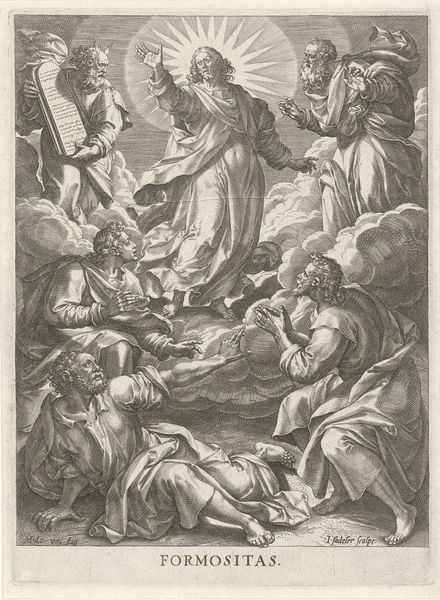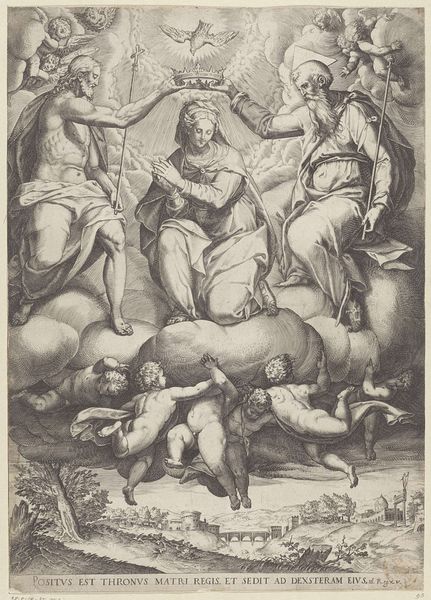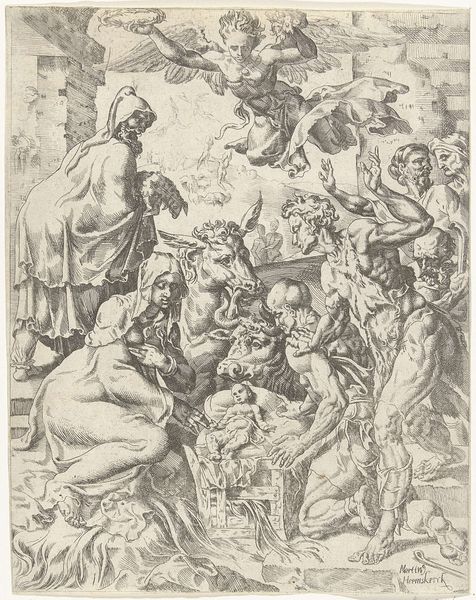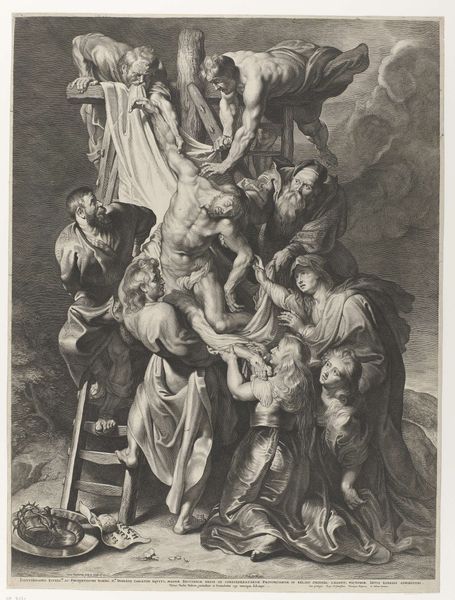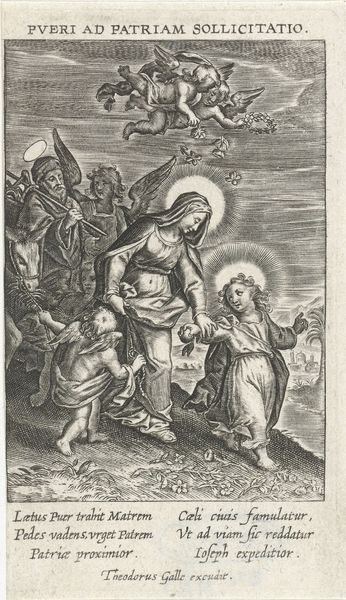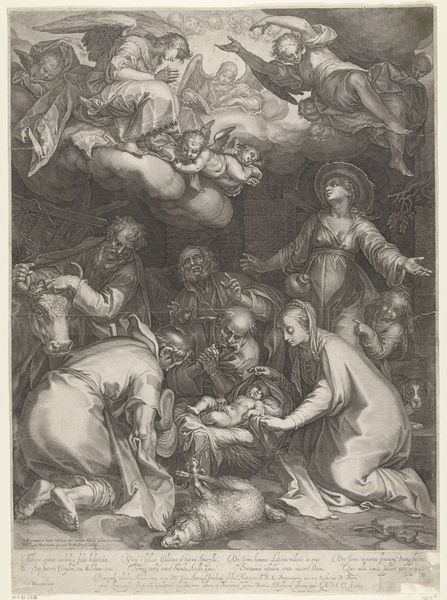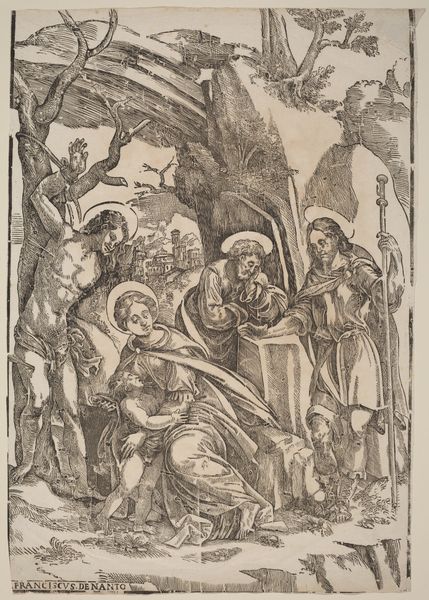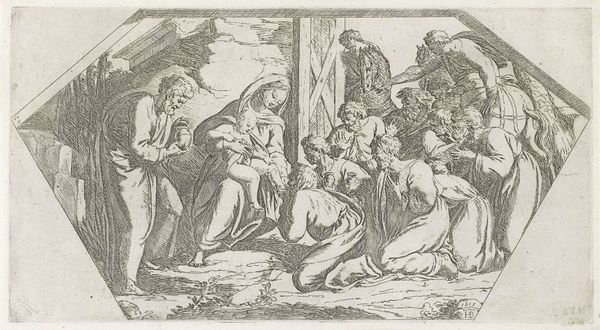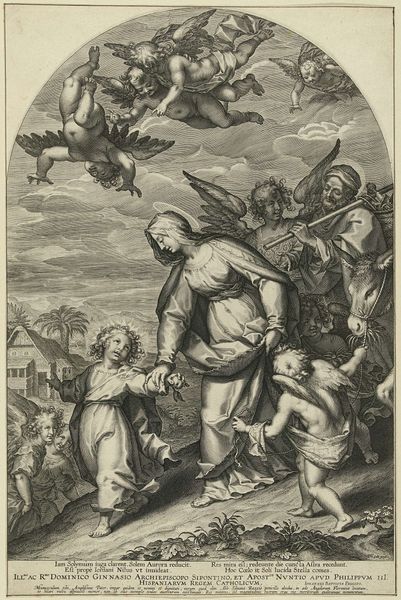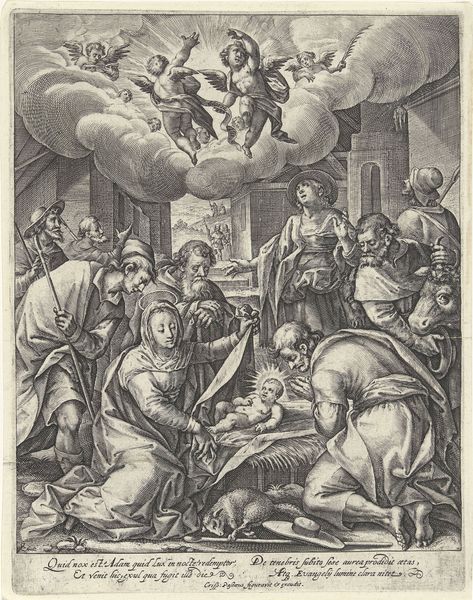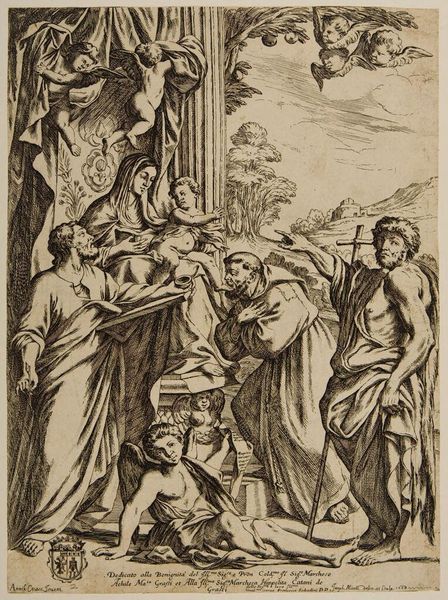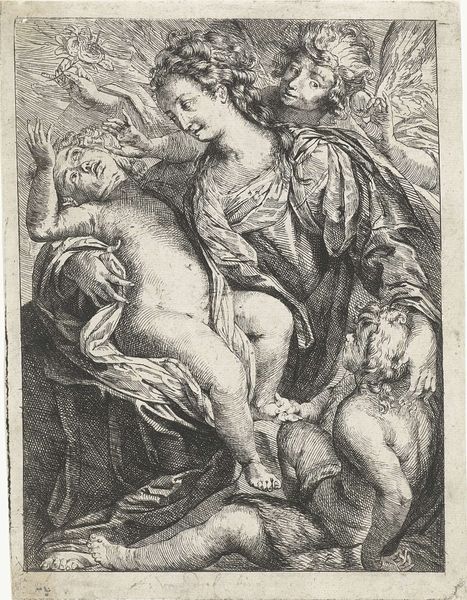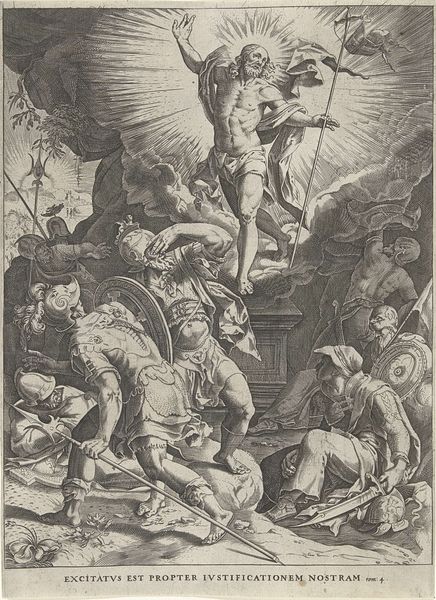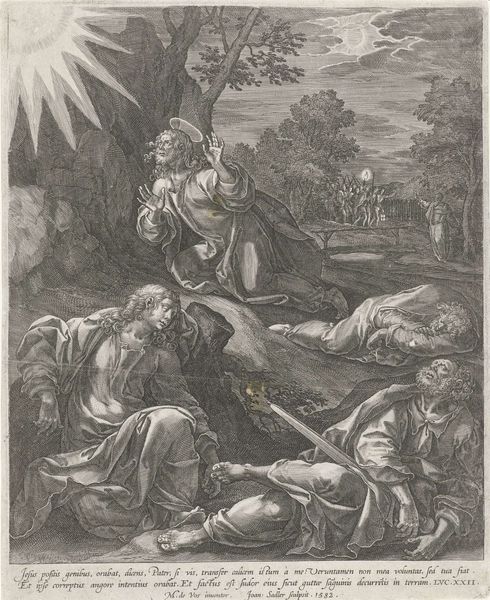
print, engraving
#
narrative-art
#
baroque
# print
#
landscape
#
figuration
#
engraving
Dimensions: height 414 mm, width 299 mm
Copyright: Rijks Museum: Open Domain
Curator: Look closely at this print, “Rest on the Flight into Egypt,” crafted around 1610 by Jacob Matham. You'll find it here at the Rijksmuseum. Editor: There's a curious serenity to it, even though the High Baroque drama seems ready to erupt at any moment. It feels like a precarious, temporary calm. Curator: Precisely! Matham's choice to depict the "rest" instead of the "flight" taps into deeper symbolic veins. The Flight to Egypt, historically a moment of refuge, has always carried potent themes of displacement and seeking asylum, which strongly resonates today. What feelings arise for you, looking at this through a contemporary lens? Editor: Well, it certainly challenges any sentimental reading. On one hand, we have this supposed holy family…but there are undercurrents, hints of something unsettling. The crowded composition adds to that. Curator: Indeed. The details are so carefully etched, wouldn't you agree? The angels attending to the donkey, the Christ Child cradled in Mary's arms… these all carry echoes of earlier devotional imagery, blending with more recent Mannerist aesthetics. The basket evokes not just their humble flight but also the promise of sustenance, doesn’t it? I'm wondering if we should consider the original location and setting, which may illuminate our perception. Editor: Of course, context is everything. Thinking about 17th-century Europe—religious upheaval, witch hunts, the beginnings of global colonial projects— this seemingly tranquil scene takes on darker hues. This escape from persecution echoes the plight of many others. We are all running from something in reality. Curator: Absolutely. Matham isn't just illustrating a biblical story; he's also invoking a sense of shared human vulnerability and yearning for safety. By focusing on the ‘Rest’, on the precious ordinary details, he emphasizes a narrative of the survival of the human soul, something relevant now as it was then. Editor: So perhaps it's this intersection of the sacred and the everyday that truly anchors the work's power? It reveals an experience deeply entrenched in a continuous search for peace in a world defined by injustice and inequality. Curator: Yes, a quiet reminder etched in ink, connecting us across time. Thank you for your comments, it’s made me notice new things!
Comments
No comments
Be the first to comment and join the conversation on the ultimate creative platform.
